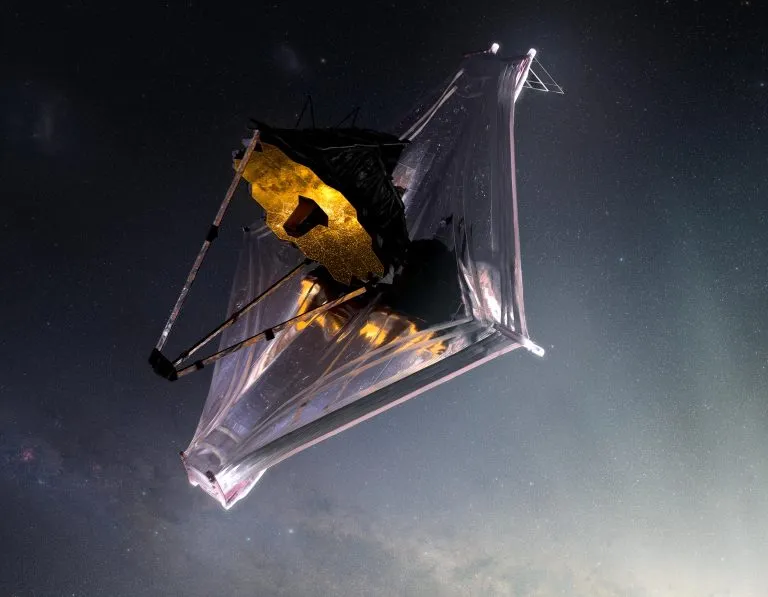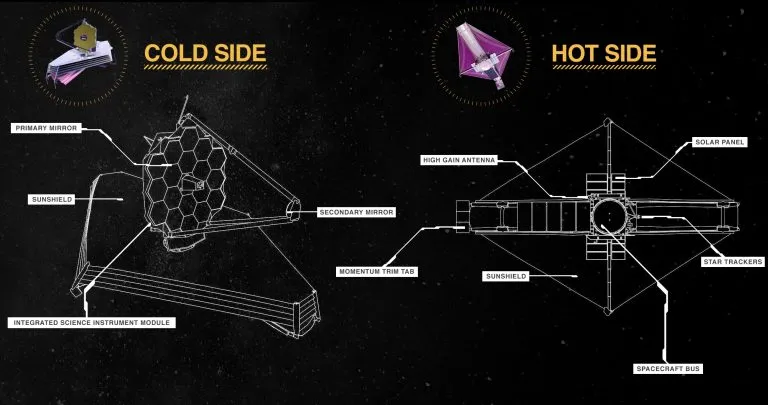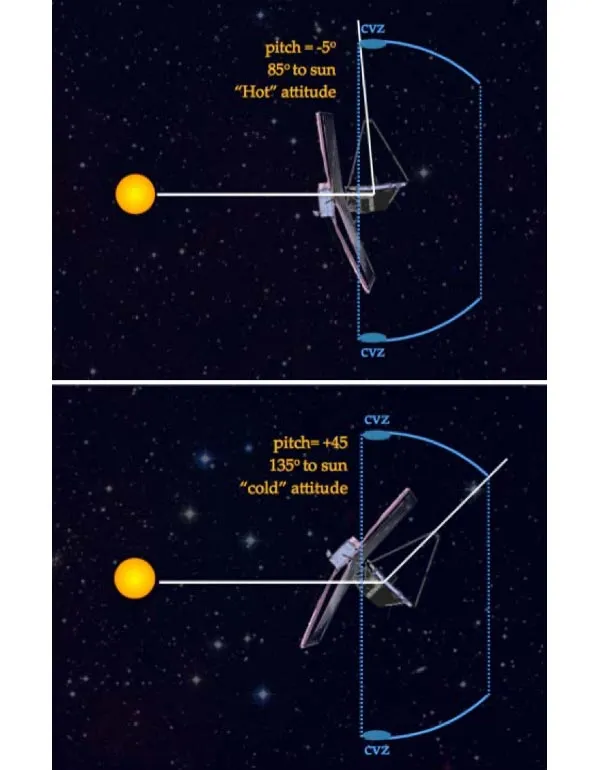After the optical alignment of NASA's James Webb Space Telescope was completed, the Webb team entered the final stage of scientific instrument commissioning. In this final stage, Weber team and instrument scientists will test all modes and operations of the four scientific instruments to evaluate their performance, calibration and operation of the whole observation station**

As the mirrors of the Weber telescope slowly cool to their final operating temperature, the Weber team is preparing for thermal stability tests. Erin Smith, a project scientist at NASA Goddard Space Flight Center's Weber Deputy Observatory, introduced the cold and hot conditions of the test.
"Weber's five layer sunshade keeps telescopes and scientific instruments cool and protected from the sun, earth and moon. This protection enables Weber to measure the infrared universe, which requires a cold telescope and cold instrument optics. However, when Weber points to different targets around the sky, the angle of the sun on the sunshade changes, which changes the thermal curve of the observatory. These temperature changes Changes will cause small changes in the observation station and affect Weber's optical quality, directivity, observation background and other parameters. "

"The thermal stability exercise will measure these changes by moving between the two extremes of Weber's field of view, from hot to cold, staying in cold for many days, and then returning to hot. During this time, Weber's team will measure thermal stability, directivity and optical wavefront drift. In addition to measuring the performance of the observatory, the team will also examine the thermal model used to predict the behavior of the observatory."
"When the telescope is blocked from the sun, Weber can observe a circular area or" doughnut "in the sky at any time, which is called the" field of view ". In the course of each year, the ring sweeps the whole sky. Inclination is the angle toward (negative) or away from (positive) the sun. The Weber point is between - 5 and + 45 degrees. The hot state is 0 degrees, and the sun is shining on the sun visor. The cold state is + 45 degrees, and the sunlight is reduced by a cosine coefficient (45 degrees), which is about 0.7. "

"In order to start the thermal stability test, the Weber team will point Weber to the hot state at a pitch angle of about 0 degrees and maintain it for 5 days at the time of thermal stability. The team will conduct baseline measurements on the pointing stability, optical wavefront error and any oscillation caused by instrument electronics. Once this baseline is established, the team will return the observatory to the cold state with a pitch of about + 40 degrees. After the rotation, the research team will use NIRCam's A set of weak lenses for 24 hours to continuously measure the impact on any short-term scale of the wavefront. After that, the team will monitor the stability of the telescope every 12 hours to measure the thermal stability of the telescope itself. "
"The telescope will spend more than a week in the cold state until the temperature stabilizes. Then Weber will return to the hot state, and the team will use FGS / niriss and NIRCam instruments to obtain high-frequency directivity stability data. The Miri instrument will also observe in two attitudes to understand how the constantly changing thermal environment affects the mid infrared background level. In this long test process, the telescope will not idle; the commissioning of some instruments Activities are compatible with hot and cold directions. "
"When put together, the data from the thermal stability test will enable the team to better understand the thermal performance of the observation station. Although these changes are expected to be very small, Weber is so sensitive that they may differ when we optimize the performance of the telescope. This real-world calibration of the complex thermal model used by Weber developers will help inform future observation strategies and recommendations."
